There is a Beginning in the End. The secret Tintoretto fraternity

Irina Nakhova, video installation for the exhibition of the Pushkin Museum of Fine Arts “There is a beginning in the end”, visualization, property of the author, 2018
Dal 11 May 2019 al 11 September 2019
Venezia
Luogo: Chiesa di San Fantin
Indirizzo: Campo San Fantin, San Marco
Curatori: Marina Loshak, Olga Shishko
Enti promotori:
- Pushkin State Museum of Fine Arts
- Stella Art Foundation
Insieme a Stella Art Foundation, il Museo Pushkin presenterà nell’ambito dell’iniziativa "Pushkin Museum XXI" un progetto speciale a Venezia: "There is a Beginning in the End", una mostra d'arte contemporanea in commemorazione del 500° anniversario dell'artista veneziano Jacopo Robusti, detto Tintoretto. Questo evento si terrà in concomitanza con la 58° Esposizione Internazionale d'Arte - La Biennale di Venezia.
La Chiesa di San Fantin, dove erano esposti i dipinti di Tintoretto, ospiterà opere di artisti contemporanei Dmitry Krymov (Russia), Irina Nakhova (Russia) e Gary Hill (USA). Le opere dialogheranno con il contesto storico del luogo e con un dipinto di Emilio Vedova, artista modernista italiano che avvertiva, nonostante il divario temporale, un forte legame con Tintoretto.
Un progetto di intervento del team svizzero !Mediengruppe Bitnik dalla Svizzera completerà la mostra e sottolineerà l'atmosfera di partecipazione e affiliazione con una segreta Confraternita veneziana.
Come ha detto Jean-Paul Sartre, "Tintoretto è Venezia, anche quando non dipinge Venezia." Un aspetto chiave dei suoi è stato lo spazio; le sue opere incarnano l'infinito universo nel suo incessante moto eterno. Le opere degli artisti contemporanei, create appositamente per questo progetto, reinterpretano l'approccio innovativo del grande Maestro veneziano e invitano i visitatori ad immergersi nel mondo di Tintoretto.
Ogni artista ha colto i principali temi artistici di Tintoretto, l'unità spirituale tra le persone, la potenza dell’intervento divino, il virtuosismo nel cogliere lo spazio in movimento e il potenziale espressivo della luce.
A differenza di una mostra tradizionale, questo progetto è strutturato come una sorta di liturgia contemporanea in cui ogni azione è una nuova opera d'arte che avvolge l'intero spazio della chiesa. In aggiunta alle opere multimediali, la mostra ospiterà un dipinto di Emilio Vedova, a cui fanno eco le opere degli artisti contemporanei.
Dmitry Krymov, scenografo, crea un'installazione performativa ispirata all'Ultima Cena presente nella Chiesa di San Trovaso, ricostruisce sull’altare di San Fantin una realtà alternativa basata sul trompe-l'oeil, un'illusione ottica, portando gli spettatori a dubitare della correttezza della loro percezione.
L'installazione multimediale di Irina Nakhova consiste di tre parti, ognuna delle quali è un riferimento alle opere del grande Maestro, e tutte reinterpretano storie bibliche dal punto di vista della storia contemporanea. Per questa artista, un tema fondamentale nelle opere di Tintoretto è l’energico, vigoroso movimento delle masse, ricco di intensità emotiva. Un materiale terrestre ricerca vorticosamente una via d’uscita anelando allo spazio esterno trascendente, difficilmente comprensibile ma percepibile attraverso l’opera di intensa drammaticità di Irina Nakhova.
Gary Hill, maestro della Media Art americana, scompone i dipinti di Tintoretto in patterns ed elementi e li utilizza come base per creare nuove essenze sonore e luminiscenti. E’ lo spazio della coscienza più che lo spazio architettonico ad ispirare il lavoro di Hill. La combinazione di immagini visive e intensi suoni elettronici consente una profonda esperienza sinestetica.
Tondo, uno degli ultimi lavori di Emilio Vedova presentato alla mostra, ha la forma di un cerchio. Riflette il concetto di circolarità infinita del tempo. Per Vedova individuava la missione dell’artistaquella di registrare e ritrasmettere l’eterno scontro delle situazioni inquietanti che incessantemente agitano il mondo intero: guerre, ingiustizie, oppressioni. Proprio come Tintoretto, ha padroneggiato grandi spazi e ha sempre agito come una forza della natura.L’impiego della forma circolare per lui diviene l’occasione di andare oltre l'ambiente pittorico attraverso la connessione spazio-tempo.
Il dipinto "L'origine d'Amore" (1562) di Tintoretto, della collezione del famoso antiquario veneziano Pietro Scarpa diventerà il centro concettuale della mostra.
Il dipinto fu commissionato da Federico Contarini, il procuratore di San Marco, uno dei fondatori della Compagnia della Calza degli Accesi, per farlo diventare il suo simbolo e ad arredare una delle sale della Biblioteca Marciana, che fu l'importante centro culturale della Venezia del XVI secolo e sede degli incontri dei membri della confraternita.
Tintoretto ha interpretato la trama del "Dialogo d’Amore" di Sperone Speroni, all'epoca molto popolare. Apollo tiene in mano un braciere con un'anima umana al suo interno, nella quale il sole accende l'amore. Il giovane dio è accompagnato dalle figure di Afrodite Pandemos e Afrodite Urania - l'amore terreno e celeste. L’opera venne dimenticata fino al 1991, quando fu scoperta dalla famiglia Scarpa.
La mostra del Museo Pushkin sarà il primo evento ad accogliere un vasto pubblico nella chiesa di San Fantin dopo lavori di restauro durati un decennio. La costruzione della Chiesa fu completata nel XVI secolo, mentre i primi edifici di culto pubblico in questo sito risalgono al X secolo.
La mostra includerà anche un intervento segreto del team !Mediengruppe Bitnik, che inviterà gli spettatori a unirsi alla Confraternita segreta del Tintoretto. L'atmosfera di mistero, affiliazione e co-creazione collegherà il loro progetto con le Confraternite veneziane
Marina Loshak, Director of the Pushkin State Museum of Fine Arts: “Tintoretto introduced changes into the world of art, changes that contrasted with conventional, seemingly regular and traditional life. The theme of brotherhoods, including the poor ones that ordered Tintoretto’spaintings, is important for us. This exhibition is about the role of an artist who neither deals with rich clients nor looks for means of subsistence or personal comfort. He aims to remove any distractions from a person’s clear view of works which surround the liturgy, works which are theperson’s focal point and will change him.”
Stella Kesaeva, President of Stella Art Foundation: "In 2019 our Foundation is returning to Venice for the seventh time. We have represented Russia in the national pavilion at the Venice Biennale on three occasions. Before that, as part of a concurrent program, we displayed projects in the Ca' Rezzonico Museum and the Tiraoro and Battioro School of Arts, and we held a special event in 2005 at the Guggenheim Foundation. This time, in cooperation with the Pushkin Museum, the Foundation is co-organizing an exhibition where current art echoes the works of Tintoretto, a great Venetian master whose 500th anniversary is celebrated worldwide this year.” GARY HILL (born 1951, Santa Monica, USA), a multimedia artist and one of the pioneers of video art, started his experiments with video and sound art in the 1970s–1980s. In his video art works and installations, the artist explores the connections between images, sound and language(“Incidence of Catastrophe,” “Between Cinema and a Hard Place”), and between the body and technology (“Inasmuch As It Is Already Taking Place,” “Inasmuch As It Has Already Taken Place”).His most famous installations are “Tall Ships,” “HanD HearD,” “Viewer” and “Wall Piece.” His solo exhibitions have been held in the most famous museums in the world, such as the Centre Georges Pompidou (Paris), Guggenheim Museum (New York), Barcelona Museum of Contemporary Art, etc. Gary Hill’s art works can be seen in many museums around the globe, including the Museum of Modern Art in New York. He has been honored with many prizes, including the Golden Lion of the Venetian Biennale (1995), MacArthur Foundation Fellowship Award (1998) and an honorary doctorate from the Cornish College of the Arts in Seattle (2011).
DMITRY KRYMOV (born 1954, Moscow, Russia) is a film director, artist and stage designer. Member of the Union of Artists of Russia and the Union of Theater Workers of the Russian Federation. He graduated from the Moscow Art Theatre School in 1976. His stage plays are performed at prestigious international theater festivals in Austria, the UK and Germany. Krymov’splays were honored with the Golden Mask award six times. The Dmitry Krymov Laboratory tours around the world, including Brazil, the USA, Australia and New Zealand. Since the 1990s Krymov has been involved in art: painting, graphic art and installations. He has had solo and group exhibitions both in Russia and abroad. His works are in the collections of the State Tretyakov Gallery, the Russian Museum, the Vatican Museum, the World Bank. In 2004–2018 he was the artistic director in the art lab at the School of Dramatic Art theater. As a director, his focal point is the interaction of the actors with the stage spaces and the stage design. His most famous stage plays include “The Death of a Giraffe,” “Opus No. 7,” “A Midsummer Night’s Dream,” “Tararabumbia,” “Honoré de Balzac. Notes about Berdichev,” etc.
IRINA NAKHOVA (born 1955, Moscow) is an artist and Moscow Conceptualist. Her main art genres are painting and installations. She graduated from Moscow State University of Printing Arts (formerly Moscow Polygraphic Institute). Since 1989 she has had over 30 solo exhibitions in Moscow, London, Barcelona, Salzburg, New York, Chicago and other cities in Europe and the USA. She is a winner of the Kandinsky Award in the “Project of the Year” category (2013). She represented Russia at the 56th Venetian Biennale in 2015.
!MEDIENGRUPPE BITNIK (Carmen Weisskopf, born 1976, Switzerland; Domagoj Smoljo, born 1979, Croatia) is a team of media artists who work primarily with the Internet. In their works they explore the concept of virtual space, specifically the darknet. Their art works have been exhibited in many museums and galleries, such as the Shanghai Minsheng Art Museum, City Art Gallery of Ljubljana, Kunsthaus Zürich, Contemporary Art Center of Vilnius, Tehran Biennial, etc. The art group received the Swiss Art Award and an Honorable Mention in the Prix Ars Electronica. Their famous projects include “Opera Calling. Hacking The Opera – Arias For All!” at the Ural Industrial Biennial of Contemporary Art, “Random Darknet Shopper,” for which they created an automated online shopping bot, “Delivery for Mr. Assange,” and many others.
EMILIO VEDOVA (1919, Venice, Italy – 2006, same) is the main Tintoretto “emulator” in the 20th century. In 2013 curator Germano Celant organized an exhibition at Scuola Grande di San Rocco to illustrate the artistic dialog between Vedova and Tintoretto. After years of being absorbed in expressionism, in 1942 Emilio Vedova joined the “Corrente” movement, which formed an opposition to totalitarian art. In 1946 he founded the “New Italian Secession” movement in association with other artists. In 1948 he debuted at the Venetian Biennale. In 1960 he won a Grand Prize for Painting, in 1954 he won a fellowship that allowed him to spend 3 months in Brazil, and in 1997 he received the Golden Lion Award for Lifetime Achievement. He taught art in Salzburg, Venice, and a number of universities in the United States.
SCARICA IL COMUNICATO IN PDF
COMMENTI

-
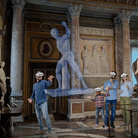 Dal 9 January 2026 al 27 February 2026
Roma | Galleria Borghese
Dal 9 January 2026 al 27 February 2026
Roma | Galleria Borghese
Sguardi oltre il tempo
-
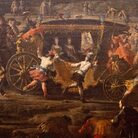 Dal 20 December 2025 al 20 April 2026
Caserta | Reggia di Caserta
Dal 20 December 2025 al 20 April 2026
Caserta | Reggia di Caserta
Regine: trame di cultura e diplomazia tra Napoli e l’Europa
-
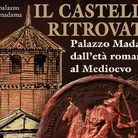 Dal 19 December 2025 al 23 March 2026
Torino | Palazzo Madama - Museo Civico d’Arte Antica
Dal 19 December 2025 al 23 March 2026
Torino | Palazzo Madama - Museo Civico d’Arte Antica
Il castello ritrovato. Palazzo Madama dall’età romana al medioevo
-
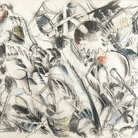 Dal 17 December 2025 al 19 January 2026
Roma | Palazzo della Cancelleria
Dal 17 December 2025 al 19 January 2026
Roma | Palazzo della Cancelleria
De Humana Mensura di Linda Karshan
-
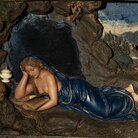 Dal 18 December 2025 al 12 April 2026
Firenze | Gallerie degli Uffizi
Dal 18 December 2025 al 12 April 2026
Firenze | Gallerie degli Uffizi
Cera una volta. Sculture dalle collezioni medicee
-
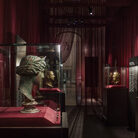 Dal 11 December 2025 al 9 April 2026
Firenze | Museo Archeologico Nazionale di Firenze
Dal 11 December 2025 al 9 April 2026
Firenze | Museo Archeologico Nazionale di Firenze
Icone di Potere e Bellezza


